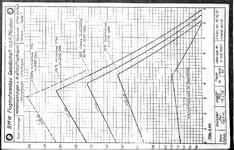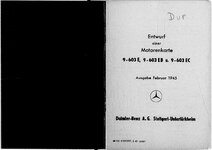Navigation
Install the app
How to install the app on iOS
Follow along with the video below to see how to install our site as a web app on your home screen.
Note: This feature may not be available in some browsers.
More options
You are using an out of date browser. It may not display this or other websites correctly.
You should upgrade or use an alternative browser.
You should upgrade or use an alternative browser.
Terminology and engine data
- Thread starter sibboh
- Start date
Ad: This forum contains affiliate links to products on Amazon and eBay. More information in Terms and rules
More options
Who Replied?Hello Tomo Pauk,
What you are stating is not really in agreement with what I have found elsewhere though the numbers you are quoting are fairly close.
There were other engines between the R-2800-21 found on the very early D and the R-2800-59 installed initially in the D-20 at a lower power rating than the R-2800-59 installed in the D-25 onwards. What I am looking for are the differences between the D-23 and D-25.
Although their Military Ratings are the same, the Take-Off Ratings are different and the SEFC should indicate the differences which is why I am looking for it. The T-O Rating is typically also 15 minutes duration which seems to make it functionally the equivalent of a Military Rating at Sea Level.
Would you be so kind to post the data you have on the -59 that are in collision with what I've posted? It is pretty hard to answer on vague stuff. P-47D used -21 and -59.
FWIW, please take a look:
Shortround6
Lieutenant General
Just for clarification, as I am sure that Tomo knows this, the chart is for the 14R engine which was much more heavily constructed than the K and included a center bearing on the Crankshaft.
Just for clarification, as I am sure that Tomo knows this, the chart is for the 14R engine which was much more heavily constructed than the K and included a center bearing on the Crankshaft.
And two-speed supercharger, plus greatly increased finning. Introduced as 14 N-50 at Paris Salon, 1938.
I think that 14-N series were more produced in France than 14 K, but the latter were widely licensed.
Simon Thomas
Senior Airman
I found this today, hopefully it fits this thread.
Attached is the type test requirements of the U . S. DEPARTMENT OF COMMERCE AERONAUTICS BRANCH published in the Air Commerce Bulletin Vol. 1, No. 17, 1 March 1930.
Bulletin Vol.1 can be found here: Air Commerce Bulletin v. 1 1929-30.
The referenced Bulletin 7-A can be found here: Aeronautics bulletin no. 7A 1934.
Attached is the type test requirements of the U . S. DEPARTMENT OF COMMERCE AERONAUTICS BRANCH published in the Air Commerce Bulletin Vol. 1, No. 17, 1 March 1930.
Bulletin Vol.1 can be found here: Air Commerce Bulletin v. 1 1929-30.
The referenced Bulletin 7-A can be found here: Aeronautics bulletin no. 7A 1934.
Attachments
The DB 600 series of engines. the A and B were with S/C geared for low altitude ('Bodenlader'), the C & D were for normal/high flight altitudes. Not sure whether the Ga and Ha ('normal' altitude) made it in production before being supplanted with 601A. The power made by those is about equal to the 601A of the time, despite still having carburetors. Note that DB was not shy of rating the 'altitude' engines for 1 min for take off, so those engines were still very usable to power heavy aircraft, like the bombers of the day.

Jumo 211A, that powered Ju 87B and R, aka the B1 and R1 once B2 and R2 emerged:


Jumo 211A, that powered Ju 87B and R, aka the B1 and R1 once B2 and R2 emerged:

Hi Tomo,Oldie but a goldie - data sheets for the different DB 605 versions:
thanks for posting, that's a very useful overview! A note: on a German forum I've read, this - obviously post-war compiled - documents have a bug. When it comes to "Verdichtungsgrad: Zylinderreihen links/rechts" they swapped the correct CRs.
Left bank (view from cockpit to prop) always has the lower CR; mentioned also in the book "Flugmotoren und Strahltriebwerke", Bernard & Graefe Verlag.
Greetings,
Galahad
Oh wow, that's a fantastic topic. Well if it isn't much, i am still coming to grips with converting ata to psi to inch Hg, i have found a very useful table but it only goes to about 1,80 ata/+11 psi. Is there something going to +25 psi by any chance?
Also, very curious, what's the PS rating for the BMW-801D-2 derated to 1.35 ata?
Also, very curious, what's the PS rating for the BMW-801D-2 derated to 1.35 ata?
1 ata is worth about 14.5 psi.Is there something going to +25 psi by any chance?
+25 psi = 2.8 ata then?
Also, very curious, what's the PS rating for the BMW-801D-2 derated to 1.35 ata?
It was also derated wrt. the max allowed RPM, for all the power settings. restrictions ended by October of 1942, when BMW finally debugged it.
Max rpm allowed was 2450, boost indeed 1.35 ata. We know for a fact the power made at 2400 rpm and 1.32 ata, ie. 1520 PS at 700m (low gear), and 1320 at 5300m (see this post). Another data point is 2700 rpm and 1.42 ata, making 1730 PS and 1440 PS at 600m and 5700m, respectively.
We can expect, for a derated 801D, a bit above 1550 (certainly under 1600 PS) down low, and ~1350 PS at ~5400m? Basically, similar to the fully rated 801C down low, and a bit better than the 801C at higher altitudes. Note that I'm not aware of 801C power figures for 2700 rpm in 2nd gear - official data I have allows only for 2550 rpm in 2nd gear.
See here for 2700 rpm 801C in 2nd gear flying in late 1941.
Good to post these! However, it should be noted that the first 11 sheets of data there are a post-war resume of DB engines compiled for the info of the Allied investigation teams. Those sheets are simplistic in parts and not original data. But, the other "Leistungsblatt" sheets are original detailed DB briefing sheets for the engines at the stated dates and issue numbers, some of which are unfortunately missing.Oldie but a goldie - data sheets for the different DB 605 versions:
Eng
It goes without saying that I'd be grateful for any original doc people can provide here (or at some another place on-line)Good to post these! However, it should be noted that the first 11 sheets of data there are a post-war resume of DB engines compiled for the info of the Allied investigation teams. Those sheets are simplistic in parts and not original data. But, the other "Leistungsblatt" sheets are original detailed DB briefing sheets for the engines at the stated dates and issue numbers, some of which are unfortunately missing.
Eng
Thank You very much for posting this Tomo!Once the DB 603 is debugged and a big S/C is installed instead of the one with 280mm impeller: a 603E materialzes:View attachment 701451View attachment 701452View attachment 701453View attachment 701454
MW30: 30% of methanol. EW50: 50% of ethanol instead of methanol. EW30: 30% of ethanol (can't be used on this engine, per 2nd pic)
This is the first and most important part of the Motorenkarte for the new DB 603 E, EB u. EC. I think this will have been very late 1944.
You can see the very similar approach to the DB 605 DB u. DC development with the different ratings and engine designation to match different fuels and with/without MW50.
References are also given for the requirement to adjust the engine for some of the possible combinations.
So, thanks for posting! Is it possible to post the image of the front cover please?
Cheers
Eng
Users who are viewing this thread
Total: 1 (members: 0, guests: 1)














